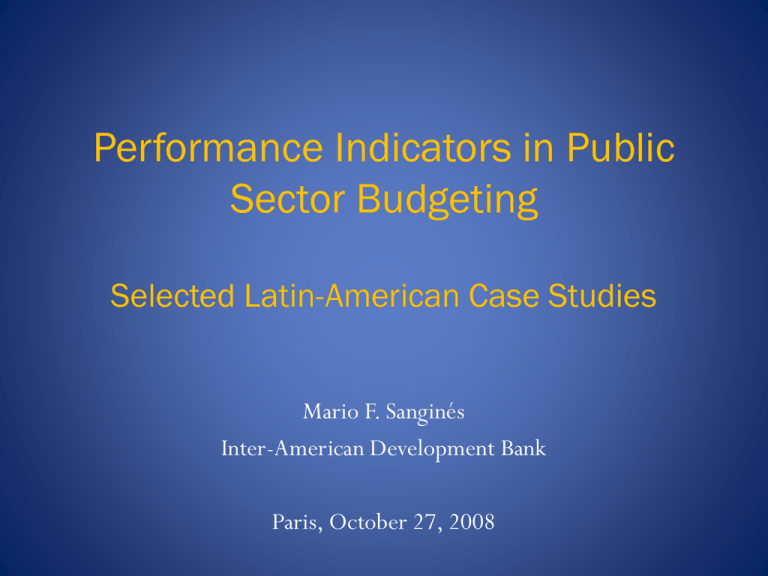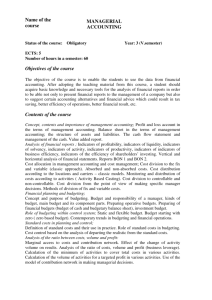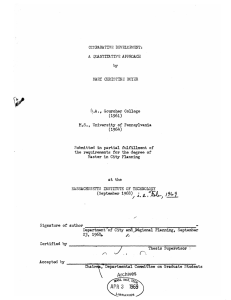Slide 1
advertisement

Performance Indicators in Public Sector Budgeting Selected Latin-American Case Studies Mario F. Sanginés Inter-American Development Bank Paris, October 27, 2008 Involvement of the IADB in Performance Budgeting Reforms • • • • Through investment and policy-based loans Through technical assistance loans and grants PRODEV Strong focus on M&E systems (in this presentation we will focus only on the “M”) Quick Overview: Chile and Colombia • Why these countries? – Successful in their own way, but quite different from one another – Chile has a well-established performance indicator system managed by the Budget Department and linked with the budget preparation process – Colombia has a performance information system mostly geared toward political accountability and with no real connection with budget formulation Chile • Manages around 1500 Indicators • They reflect efficacy, efficiency, economy, and service quality • They are applied to processes, products, and results (intermediate and final) • Around 89% are related to products and results, while 11% related to processes • Began to be rolled out in 1994 Dipres Website Colombia • SINERGIA M&E System; SIGOB • Mostly output and outcome indicators derived from the National Development Plan. • Began to be rolled out in the early 1990’s, but became relevant only since 2002 • As of 2006, it managed around 500 indicators related to 320 presidential goals. Colombia SIGOB Website Some key questions • What types of performance indicators are developed? – Depends on what they will be used for. If closely linked to budget decisions and overall administrative efficiency, the Chile model is useful. If for monitoring government programs and promoting public accountability for results, the Colombia model is useful – Use common sense. Begin simply; ensure information sources are available and reliable; ensure feasibility of a baseline measurement; always keep in mind what use will be made • Should there be central requirements? – If information is to be used for a “central” purpose (budget discussions or monitoring a development plan), central requirements are important to a certain level (below that, institutions can detail further) – Some of these relate to methodological principles for constructing indicators, and in terms of evaluations, reference TORs to carry them out – Central data collection systems are also useful – HOWEVER, institutional initiatives should never be discouraged • Should targets be set for programmes? – YES, as long as: • Programmes are DEFINED PROPERLY and not just as a formality (see Mexico case) • The targets are the product of a strategic planning process • There is a baseline measurement and reliable information sources for monitoring • What types of information systems have been developed to support PB? – This is an area where good practices are scarce – Can IFMS solutions “piggyback” performance information? Not clear. – Need to be clear who is “responsible” for producing (and auditing?) the information – Colombia SIGOB is robust but not connected to budget process – Chile MCS uses web-based application for transmitting data from entities to DIPRES • Some “not good” practices: – Start with an unmanageable amount of indicators – Be careless about baselines and formulas – Not be sure where data will come from – Fail to ensure that indicators are reliable (formal quality control processes) – Attempt to establish a “formula-type” relationship with budget allocations – Assign measurement responsibilities to people far from service delivery points Thank you! mariosa@iadb.org







